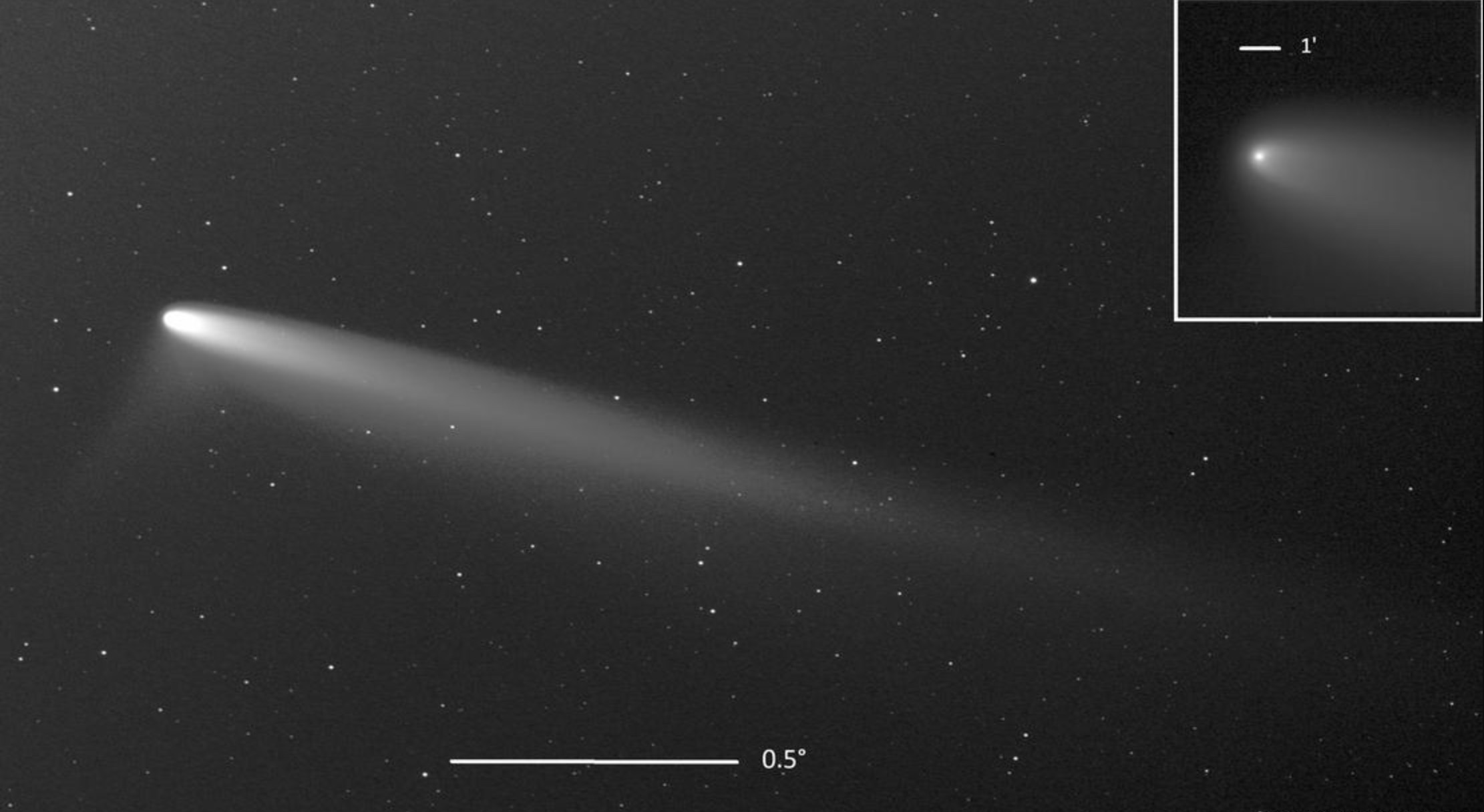LUBBOCK, TX — This Saturday, Oct. 12, sky-gazers will have a special opportunity to witness Comet C/2023 A3 Tsuchinshan-ATLAS as it makes its closest approach to Earth, approximately 44 million miles away.
According to NASA, this event is rare, as the comet will not return for another 80,000 years.
The comet is expected to be at its brightest after sunset and visible in the western sky for about 45 minutes. Bill Cooke, lead of NASA's Meteoroid Environment Office, stresses that this weekend marks the perfect time to catch a glimpse, as it will be moving out of the sun’s glare.
"Comets look okay to the unaided eye, but with a pair of binoculars, they'll knock your socks off," said Cooke. Observers are encouraged to grab their binoculars for a better view, especially as the comet will remain visible nightly through the end of October.

Until now, viewing the comet with the naked eye was only possible from the Southern Hemisphere.
(Credit: Patrick Ditz/AP Photo)
First spotted in 2023 by astronomers at the Purple Mountain Observatory in China and an ATLAS telescope in South Africa, Tsuchinshan-ATLAS is a snowy, icy object nearly two miles in diameter. Its tail, composed of dust and gases, stretches for tens of millions of miles, making it one of the biggest celestial phenomena.
The comet comes from the Oort Cloud, a region filled with icy debris surrounding our solar system. Unlike some comets that make frequent visits, such as Encke's Comet every 3.3 years, Tsuchinshan-ATLAS has a highly elliptical orbit, making its return to the inner solar system an extraordinarily rare experience.
To see the comet, NASA advises to look to the west-southwest sky around 30 to 45 minutes after sunset. It should appear low on the horizon, near the bright star Arcturus and the planet Venus. As the month progresses, the comet will rise higher in the sky, but it will also dim as it moves away from the sun.
Shannon Schmoll, director of the Abrams Planetarium at Michigan State University, notes that while the comet will be visible to the naked eye, binoculars will enhance the experience. By late October, viewers may need binoculars to spot it, as it will gradually become less bright.
With an orbit of 80,000 years, Comet A3 Tsuchinshan-ATLAS was last visible from our planet when Neanderthals roamed the Earth. As the comet makes its appearance, observers are reminded that missing this opportunity means waiting for another 80 millenniums to see it again.
Subscribe to the LIVE! Daily
Required






Post a comment to this article here: